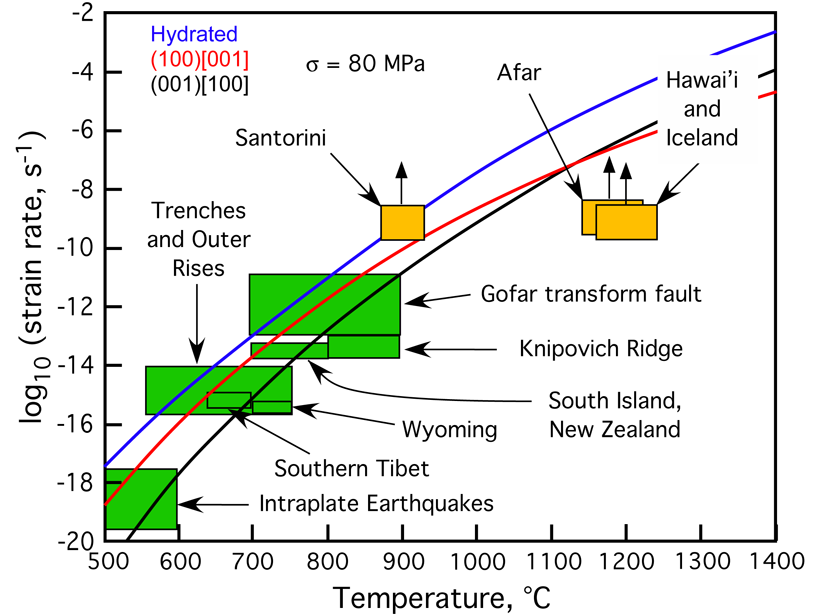Source: Journal of Geophysical Research: Solid Earth
The depth extent of earthquakes in mantle lithosphere is thought to be controlled primarily by temperature. However, using a review of seismicity from different regions, Molnar [2020] proposes that strain rate is also a primary factor, as predicted by experimental flow laws.
The thermal structure of the deep lithosphere is poorly constrained. Thermal models provide crude temperature estimates at depth, while seismicity is used as a thermal proxy, under the common assumption that the base of seismogenic zones occurs at about 600°C, based on yield strength envelopes and position of and temperature at the brittle-to-plastic transition for a ‘standard’ tectonic strain rate.
Laboratory experiments demonstrate that the depth and temperature of this transition should also depend on strain rate, but this has been considered negligible in lithospheric studies of seismicity, and indeed it is a difficult parameter to determine from field and geophysical data.
Molnar reviews observations of tectonically active regions in different environments and suggests that earthquakes may occur at temperatures significantly higher than 600°C at high strain rates, as predicted by experimentally derived flaw laws.
Both existing datasets (geophysical, geological, experimental) and new ocean bottom seismometer recordings likely hold the clue to better extrapolate and understand the limitations of laboratory results applied to natural systems at much larger scales. They could also help to address the question of how to link strain rates over wide spatial and temporal scales.
Citation: Molnar, P. [2020]. The brittle‐plastic transition, earthquakes, temperatures, and strain rates. Journal of Geophysical Research: Solid Earth, 125, e2019JB019335. https://doi.org/10.1029/2019JB019335
—Rachel E. Abercrombie, Editor, and Javier Escartin, Associate Editor, JGR: Solid Earth
Text © 2020. The authors. CC BY-NC-ND 3.0
Except where otherwise noted, images are subject to copyright. Any reuse without express permission from the copyright owner is prohibited.

